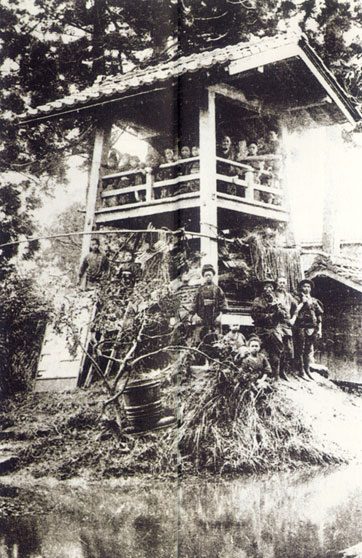

Semiannual cropping, two cropping, second cropping…
In Japan, thanks to abundant rainfall and fertile soil, it is possible to raise two or more crops per year.
Yet, there was a region which was once known as having just one harvest every three years.
That was the Niigata Plain.
Paddy fields like mud lakes were basically not very productive. Furthermore, in this region even the small amount of crops they yielded were washed away every two or three years by heavy floods.
People faced unpredictable weather, battled endlessly against insects and weeds, worked while sinking from shoulder to foot in mud, being frozen in cold weather as they spread new soil over their fields.
Further, once a dike was broken down, all their hard work was washed away and they lost everything.
Dark floodwaters would attack homes and land, killing people and livestock. The water would flood for days, turning the Niigata Plain into a great sea of mud.
Many villages downstream were protected by dikes.
The question was what to do when floodwaters were so high that a dike might give way at any moment?
If a dike on the opposite bank were to collapse, water in the river would immediately go down, at least for the time being.
It is said that some people were sent as “suicide corps” to destroy dikes on the other side of the river during torrential rainfall at night so as their own village to be saved.